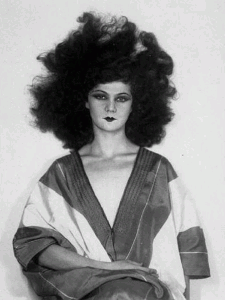![]() Guide: Modern Dance in America
Guide: Modern Dance in America
The period from about 1926-1942 is considered to be the golden era of dance in America. It was at this time the foundations of Modern dance were formulated and established and a vibrant canon of dance styles evolved.
Influenced by the new approaches to dance popularized by Denishawn, and ideas filtering in from the German Ausdruckstanz (“Expressionist dance”) movement, a few individuals—dancer/choreographers, as well as people who advocated and popularized their work—forged a repertory and methodology of dance that would be recognized as artistically legitimate by an enlightened public.
These “heroes” developed approaches to dance that would influence (and be reacted against by) the following generations to this day.
Some Notable Individuals:
- Dance critic John Martin wrote for the New York Times from 1927 to 1962, and was instrumental in cultivating public appreciation of dance and developing a vocabulary for analyzing dance. He was especially crucial to the career of Martha Graham. His books include The Modern Dance.
- Martha Graham is perhaps the most famous of all dancer-choreographers. For more, see my post on her 1935 dance Frontier.
- Doris Humphrey had a very similar professional path to Graham. Her works are perhaps less well documented and less frequently performed today, but her methods and approaches to dance continue to be influential. See my post with a brief overview of her life and work.
- Charles Weidman was Humphrey’s creative partner and one the first notable male dancers after Shawn. His choreography and dancing style was highly theatrical and at times comedic, containing elements of pantomime—a complementary contrast to Humphrey’s serious, abstract style. Some of his works dealt with social and political themes in metaphorical, generalized ways. In the 1950s, after the dissolution of the Humphrey-Weidman company, he choreographer for opera and broadway and remained active until 1975. Most of his works have not survived. [Watch a clip of a dance by Weidman on youTube.]
-
Helen Tamiris, trained in ballet, created dances that explored social issues and was among the first dancers to integrate influences from jazz and African-American culture, creating a suite of dances to Negro spirituals. She also choreographed for Broadway musical theatre. An energetic advocate of dance, founded the Dance Repertory Theatre and was key in establishing the Works Progress Administration’s Federal Dance Project, a government-funded effort to stimulate the creation of dance during the Great Depression. Tamiris believed in creating dance that would be relevant and politically motivating for the working class of America. [Watch a short clip of Tamiris dancing on DanceMedia.]
- Mary Wigman was a German dancer of the Ausdrucktanz school whose ideas influenced American dancers, especially Martha Graham (generally indirectly, through writings). [Watch a clip on YouTube about Mary Wigman, with a clip of her iconic “Witch Dance”.] She established a dance school in New York, and selected Hanya Holm as the director. Holm was dancer/choreographer and a particularly influential teacher who cultivated technical mastery and individuality in her students. Her works represented a blend of her native German dance style, which she described as focused on personal emotional experience, and the American aesthetic, which she described as concerned with objective experiences and society. [Watch a short clip of a dance by Hanya Holm on YouTube.]
Some Important Places and Institutions:
- Denishawn (founded 1915) was a precursor to the heroic age of dance. It was a dance company and training ground for young dancers founded by Ruth St. Denis and Ted Shawn. It became enormously commercially successful and was one of the most popular dance companies to have existed in America to date. Denis and Shawn created works somewhere in between commercial vaudeville-derived dance and concert dance (what we now think of as “Modern” dance). Denishawn created dances inspired by “exotic” cultures [Watch an “Indian” dance by St. Denis on YouTube], Americana dances, and “musical visualizations.”
- Bennington Festival (1934-42) at Bennington College in Vermont. Graham, Humphrey, Weidman, and Holm taught dance students, and developed and performed new works. Followed by a similar program at Connecticut College, which has become the American Dance Festival at Duke University in North Carolina.
- Dance Repertory Theatre was a New York City cooperative created by Helen Tamiris for dance companies present their works collaboratively. Graham and Humphrey-Weidman participated in the 1930s.
My main sources for this post are:
Mazo, Joseph H. Prime Movers: The Makers of Modern Dance in America. Princeton, 2000. pp. 13-34.
Reynolds, Nancy, and Malcolm McCormick. No Fixed Points: Dance in the Twentieth Century. Yale UP, 2003. pp. 1-10.


